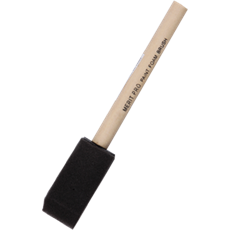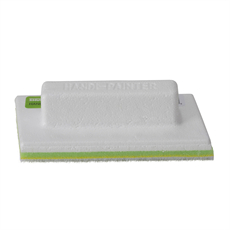Selecting the perfect brush for a DIY home painting project is crucial to achieving a professional-looking finish. Here’s a guide to help you choose the right brushes for your home painting needs:
- Paint Type:
- Determine the type of paint you’ll be using. Brushes designed for water-based paints (e.g., latex or acrylic) are different from those used for oil-based paints. Using the wrong type of brush can lead to poor results.
- Brush Type:
- For general interior painting, consider using synthetic bristle brushes. These brushes work well with both water-based and oil-based paints, and they are often more affordable and durable than natural bristle brushes.
- Brush Size:
- Choose brush sizes based on the area you’ll be painting:
- 2-inch to 3-inch brushes: Ideal for trim, narrow surfaces, and cutting in edges.
- 4-inch to 5-inch brushes: Suitable for larger surfaces like walls and ceilings.
- 1-inch to 2.5-inch angled brushes: Great for cutting in along corners, edges, and trim work.
- Choose brush sizes based on the area you’ll be painting:
- Bristle Shape:Brushes come in various shapes, such as flat, angled, and round. The choice depends on the specific job:
- Flat brushes: Good for large, flat areas like walls.
- Angled brushes: Ideal for cutting in along edges and corners.
- Round brushes: Useful for detailed work and trim.
- Quality:
- Invest in high-quality brushes for a smoother finish and longer brush life. Well-made brushes hold more paint and provide better control.
- Handle Length:
- Choose handles that are comfortable for you to hold. Shorter handles are easier for close-up work, while longer handles provide more reach for ceilings and high walls.
- Cleanliness and Maintenance:
- Consider using disposable brushes for one-time or small projects. For reusable brushes, ensure they are easy to clean and maintain.
- Painting Techniques:
- If you plan to use techniques like stippling, dragging, or sponging, you may need specific brushes or tools designed for those methods.
- Budget:
- Determine your budget for brushes. While quality is important, there are affordable options that provide good results for DIY home painters.
- Test the Brush:
- Before starting your project, test the brush with your chosen paint on a scrap surface to ensure it feels comfortable and provides the desired coverage.
- Ask for Recommendations:
- If you’re unsure about which brush to choose, ask for recommendations at a paint store or consult with experienced DIYers or professionals for advice.
Remember that proper cleaning and maintenance of your brushes are essential to prolong their lifespan and ensure they perform well throughout your project. After painting, clean the brushes thoroughly according to the paint manufacturer’s instructions.
By carefully selecting the right brushes for your DIY home painting project, you can achieve a smoother finish, reduce paint wastage, and make the painting process more enjoyable and efficient.














